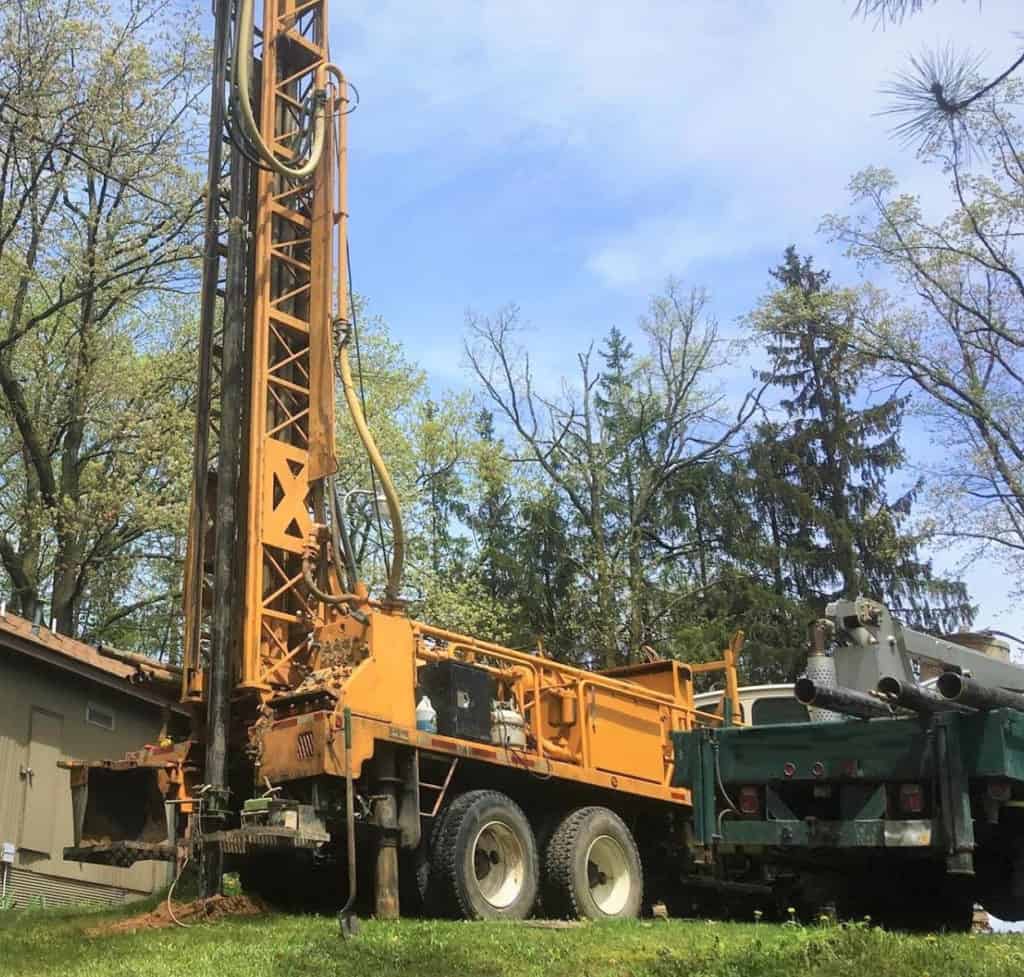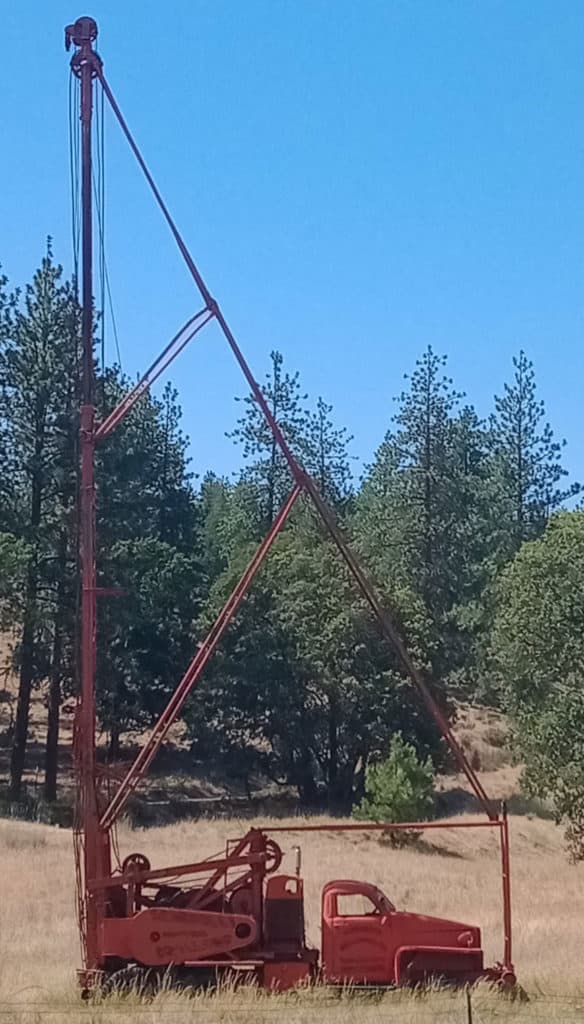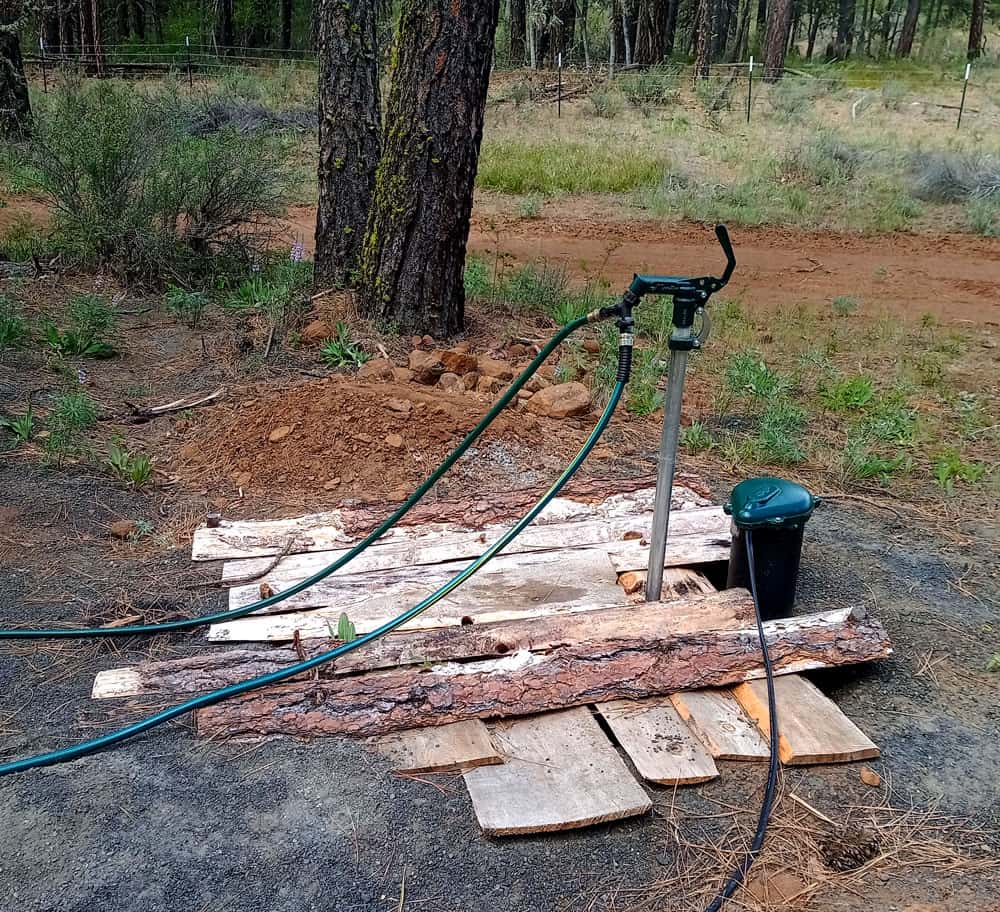
Most people will never have to experience having a well drilled on their property. However, for those who do get this opportunity, there are some things you’ll want to keep in mind as you plan and prepare to have a water well drilled for their water source. In this article, I cover 8 items that we have experienced with our water well.
When I had our well drilled, I discovered several unexpected situations or scenarios.
1. It’s Important to Understand Local, County, and State Water Well Regulations
Depending on your property’s location, there could be strict codes regarding the activity of digging a private well. Laws can dictate permits, types, locations, depths, volumes, etc. Check with the local, county, and state authorities before you start digging. If you’re unsure which governing body to contact, try getting in touch with a local drilling company to get some guidance. The state where our property, and now our well, resides requires that only a licensed well driller can drill water wells, and there is a $200 state permit required.
Having Well Water Tested
Also, keep in mind that after a well is drilled and you have water, it’ll need to be tested. This is typically done by a local governing body such as the county or a third-party lab. I only had to check for a couple of variants to satisfy the county authority for my well. The cost was $65 for the two tests. My e-coli test failed, so I had to shock my well with chlorine and then test it again later for another $35 fee. For more in-depth tests, I’d have to send water samples off to a lab for a more in-depth analysis.
Depending on your location it’s most likely highly recommended, if not required, to have your well water tested annually.
2. Make Room On Your Property For The Well Drilling Rig
Keep in mind that well drilling rigs are large vehicles that require ample room to set up and maneuver. In many cases, there will be a secondary vehicle or trailer that will need to be parked nearby the drilling rig that carries the casing along with other required supplies. The driller could also bring in a water tank or trailer, which is critical for drilling a well. Make sure there’s an area for the drilling rig and the supply vehicles to turn around comfortably. Also, there shouldn’t be any overhead obstacles like power or other utility lines or tree limbs.
3. Know And Understand The Complete Cost To Drill a Water Well
Depending on your location and geological area, you’ll be paying in a range between $15 to $50 per foot. So, the deeper the well, the more substantial the bill for drilling. The per foot pricing is only the cost of having the water well drilled; after that, the pump’s expense and any other items needed to pull the water out of the freshly drilled well from the ground.
The first 25 to 50 feet or so can be the most expensive because you’re also paying for the well-casing. Again this will heavily depend on your area and the well-drilling company’s fee structure.
The diameter of the residential casing can range from 5″ to 10″ and more. The well-casing helps keep the well from caving in on itself and contaminating any well water below that. For example, each well-driller can do it differently, but you could be paying $40 per foot for the first thirty feet and then $30 per foot for anything beyond that first 30 feet.
Also, don’t forget to calculate any sales tax on the drilling amount if that applies in our state.
The Well Casing Material.
Well-casing can be made of carbon steel, PVC, or other plastic, the most common, and stainless steel. Different geologic formations will dictate the type of casing used.
4. What are the Power Requirements to Pump the Water from Your Well?
So, beyond the cost of the permits, the water well drilling price, the casing, and the pump, the cost to have power brought to the well for pumping the water to the surface and beyond.
Depending on your pump, up to 220 volts could be required for power. This is not an issue if you happen to be on the grid with 220 already available.
However, if you do not have 220 volts available or not on the grid, other arrangements will need to be considered. For example, if you have a deep well, you’d have a submersible pump.
I had a Grundfos SQFlex Centrifugal Solar Water Pump installed; it made the best sense for our water needs. This particular pump ended up with one of these pumps where I can run either AC or DC power to the pump, and it doesn’t matter which one, and I can change the power source without having to make any adjustments to the pump. The only requirement is that the power source is a minimum of 30 volts.
Check with your water well driller before drilling to make sure you understand which type of pump is being installed and how much power it will require.

5. How Long Does it Take to Drill a Water Well?
My most frustrating part with getting a water well drilled has been getting the well-driller to my property. In the beginning, they will come out to analyze the property make some suggestions.
Work on fulfilling those suggestions, which might take a week or two depending on everyone’s schedules. Then once you know pretty much where the well-rig will set up and drill, it’s a matter of waiting for a time they’re available.
Once the water well drilling rig is on the property, it’s been said that it’ll take 1 to 7 days, depending on the depth and the ground makeup.
Getting a water well driller to your location can be anywhere from a couple of weeks to several months, especially if you have a limited number of well-drillers servicing your area and how booked-up their schedule is.
Per my well-driller, every well is unique in its own way; therefore, each well can have its own unique challenges, making scheduling difficult.
6. What is the Expected Life Of Your Water Well?
Typically according to what I found in my research, 15 years to 50 years and longer. It depends on the geology, underground aquifer volume, and how many other wells tap into that same water source.
How do you know if your well is going dry?
Much like a well-pump going bad, certain indicators can point to your well possibly drying up. Such things as muddy or cloudy water, faucets sputter throughout the house, and the well-pump runs longer, plus water can also taste different, along with neighbors complaining of the same issues.
7. Research and know what types of pumps are available or required in your area.
To get the well water up out of the well and to a faucet will require a pump of some kind.
How long does a water well pump last?
From what I’ve found, most water well pumps will typically last somewhere between 8 to 10 years and 15 years if the well isn’t utilized that often, such as in a case of a summer home or family cabin.
Signs that your well pump is going bad?
Although there’s no real science to know when a water well pump is about to go south, there are some symptoms to watch out for, though:
- Muddy or cloudy water
- Water pressure fluctuates throughout the house.
- Strange noises coming from the water well pump area.
- Air spitting out of facets when they’re turned on.
- Unexpected high electric bills or higher levels of power usage if on a solar system.
How deep should a well be for drinking water?
This is another area where there is no science about exactly how deep a well should be for drinking water. However, from the history and experience of others, on average, a household well can range from 100 to 500 feet deep.
Keep in mind, though, that the depth of each well will vary, which is dependent on the geology and water levels of your particular area. Something else to keep in mind is that generally, the deeper the well, the more likely there will be more minerals in your water which they call “hard water.” To fight against hard water there are reverse osmosis water softening equipment you can have installed or install yourself.
Today, hard water is not a real issue as you can add a water softener system to the house, cabin, or cottage.
Much like a well-pump going bad, certain indicators can point to your well possibly drying up. Such things as muddy or cloudy water, faucets sputter throughout the house, and the well-pump runs longer, water can also taste different, along with neighbors complaining of the same issues.

8. Calculating Where to Drill a Borehole.
To determine a good location where to drill a borehole, you can do a few things.
- Contact a local well driller and talk with them as they will know your area the best. The driller will come out and look at your property and direct you to a good location for a drilling rig to drill. You can also look online to find out the topographic maps that can help you discover the lay of your land and where there might be a ravine area that would make for an excellent place to drill.
- Your well-driller might have the names of people who have the skill of dousing. Dousers are someone who can locate underground water aquifers using a V-shaped stick or an L-shaped rod or rods. I ended up going with a guy that only used one L-shaped rod. He said there was a large moving body of water 240 deep. When I had the well drilled, they found water at 240 feet. The douser was off on the volume of the water as he said it’d be 40 plus gallons a minute, where I ended up with 11 GPM. I’m okay with those results, and at the time, I paid $140 for his dousing services.
- If you cannot figure it out, you could use a hydro-geologist. Hydro-geologists can do various types of site evaluations on your property. These evaluations will be based on charts, maps, and the history of other wells in the area. They will provide you with a few reports to decide which place makes the most sense to drill. This type of evaluation sounds sort of like an educated guess to me.
In Conclusion
Although there are many things to know about having a well drilled on your property, it has a gratifying result, water! By doing your due diligence and gathering as much data and information as possible, the whole process can run smoothly with your gained knowledge.
Thanks for reading this article.
